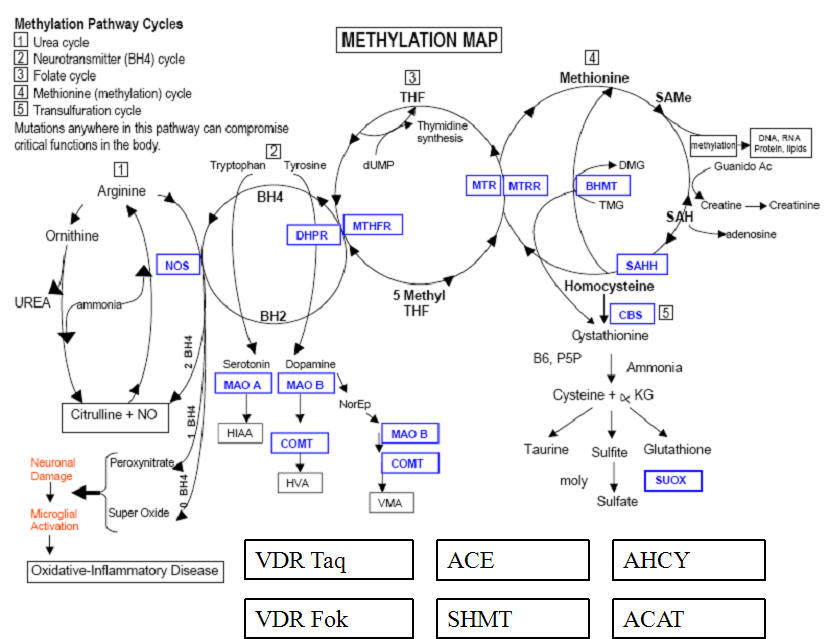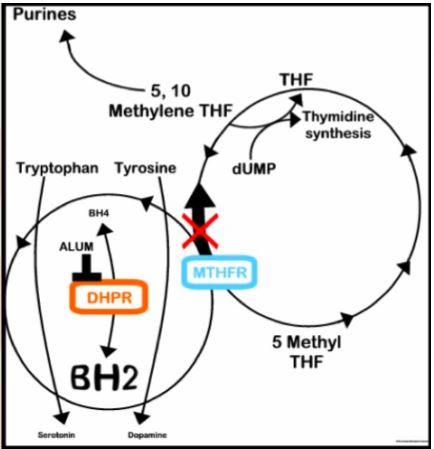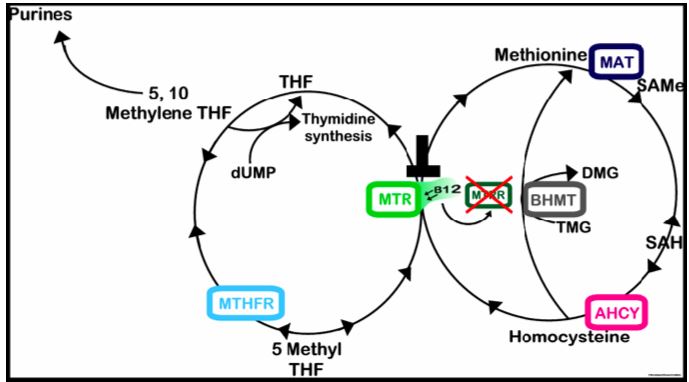H-KQGE
Dagobah Resident
Re: Re: Endothelial dysfunction
I'll say! It's going to take a while to grok that information, a fair amount of crossovers on that myelination/remyelination list. I agree that we could all use several parts of that process, with A LOT of people likely to do well (if they haven't "fallen off of a cliff", so to speak) even though the focus is on autistic children. What bugs me when it comes to personal healthcare responsibility is the lack of it by people who are capable, & should know better, especially if they have the internet at their disposal. Worse, are those with obvious serious psychological/emotional/physical signs & refuse to act. Reminds me of the age-old male stereotype where men will just wait for problems to pass ("nah, it'll fix itself, no worries") which is fear in some cases, but basic wishful thinking.
She seems good ( based on what I gleaned from on yesterday's quick look) & I'm always more encouraged when these doctors are parents & of course, those certain credentials that complement each other ( alternative medical holistic care ) helps the more recognized one's.
I like this
And
Thanks for the link on L-methylfolate with B12/B6. This folic acid versus folate businesses is bad, & I hope it doesn't get worse what with the information in the article posted by Gaby. I think I saw that on SOTT a little while ago too.
LQB said:H-kqge said:The last one is pretty complex (to me at least) & he kind of whizzes through the presentation. It's a bit daunting to wrap my head around the small parts that I think I understand, the larger parts... well, like LQB said "Looks like there is a bazillion methylation support protocols out there."
Yes, for example, Yasko's methylation protocol for autistic children is as complex as anything I've ever seen [her Step 3 is remyelination of the nerves - parts of which we could all probably use - http://www.dramyyasko.com/resources/autism-pathways-to-recovery/chapter-8/]
Here is a source for L-methylfolate mixed with B12/B6: http://hsfighters.bioactivhealth.com/ingredients.htm.
I'll say! It's going to take a while to grok that information, a fair amount of crossovers on that myelination/remyelination list. I agree that we could all use several parts of that process, with A LOT of people likely to do well (if they haven't "fallen off of a cliff", so to speak) even though the focus is on autistic children. What bugs me when it comes to personal healthcare responsibility is the lack of it by people who are capable, & should know better, especially if they have the internet at their disposal. Worse, are those with obvious serious psychological/emotional/physical signs & refuse to act. Reminds me of the age-old male stereotype where men will just wait for problems to pass ("nah, it'll fix itself, no worries") which is fear in some cases, but basic wishful thinking.
She seems good ( based on what I gleaned from on yesterday's quick look) & I'm always more encouraged when these doctors are parents & of course, those certain credentials that complement each other ( alternative medical holistic care ) helps the more recognized one's.
PATHWAYS TO RECOVERY:
Today we stand at the dawn of the age of personalized medicine. Although it's been predicted that it may take several decades before these new understanding can be applied, why wait? There is urgent need today. We have the technology and knowledge-now. We are able to look at crucial nutritional pathways and examine their underlying genetics-now. We can customize programs to meet individual unique needs and make a difference-now. That's what the Yasko Protocol is all about.
From Pathways to Recovery by
Dr. Amy Yasko
I like this
Dr. Amy:
Information You Need Now
When my focus shifted from academic research and biotechnology to integrative healthcare, I changed the way I shared information—from scientific articles in peer reviewed journals—to books, internet, conferences, videos, and articles.
These quickly deliver the latest discoveries from clinical practice to those who need them most. As autism reaches epidemic proportions, this is critical because knowledge is power.
I share the core science to empower you, so that you can understand for yourself why this approach is valid. This information also helps you follow the program.
And
Additional Therapies
In this phase of the program, it also makes sense to integrate other therapies that enhance nerve growth and maturation, for example, magnetic therapy. While I haven’t found that it enhances metal excretion, I have seen a significant effect on subtle cognitive function. Recent work by Dr. Dean Bonlie confirms that electromagnetic therapy is safe and effective for a wide range of neurological problems, including regenerating and repairing damaged nerves and enhancing the body’s natural stem cells. Magnetic energy may also increase the oxygencarrying capacity of the blood, improving the assimilation of nutrients and oxygenation of tissues. The use of Nariwa magnetized water and Penta oxygenated water may also be useful adjuncts to any program to enhance nerve growth and demyelination.
The March 2004 issue of the Journal of Neuroscience describes environmental influences on the levels of BDNF (brain derived neurotrophic factor), which promotes neuronal growth and survival and regulates communication between neurons. An enriched environment (in which there is helpful communication, visual, auditory, and other stimuli) fostered significantly higher levels of this factor. Dr. Cheri Florence, a medical speech/language pathologist, has described tremendous personal success with her own son. She has made use of strategies that may help to create an enriched environment, such as enhancing visual thinking to help promote language.
Dr. David Steenblock, Dr. Barbara Brewitt, and Dr. Luis Aguilar have pioneered the direct use of certain brain growth factors for stroke as well as autism. Insulin like growth factor (IGF) has been found to stimulate enzymes in the methylation pathway in addition to its effects on neural development. Fibroblast growth factor (FgF) has also been found to have activities beyond its effects on nerve growth. FgF has been reported to increase dopamine levels, as well as to decrease seizure activity.
Dr. Edward Traub has developed CI (constraint induced) Movement therapy, which has proven to expedite recovery times after stroke. The basis of the therapy is helping the brain to overcome “learned non-use”. Some of these therapies may be applicable to autism in the future to help to accelerate recovery after the biochemical imbalances have been addressed.
Music therapy has been reported to be successful in helping to enhance speech in children. A number of scientific journals have found that music affects regions of the brain involved in cognitive, affective, and mnemonic processing. The entire July 2003 issue of Nature Neuroscience was devoted to music and neuroscience, as was the March 2004 issue of the New York Academy of Sciences magazine. Recent research from the University of London suggests that many children with autism have outstanding abilities in tone memory and discrimination. Music therapy may be an avenue worth exploring to help enhance language skills during this point of the program.
In Conclusion
Obviously, understanding and implementing this program will not happen overnight. It’s a slow process. As you immerse yourself in all of the science and begin the initial steps, know that you will be supported, helped, and guided by other veteran members of the support community on my website chat room. This will make the learning process smoother and easier.
This program is more than a laundry list of supplements for you to take. It’s a process that you must take the time to read, then reread, understand, and embrace in order to really obtain the benefit. Knowledge empowers. The information contained in this book better positions you to use all of what I have offered as tools for health. […] One principle of the site and of this work is to “pay it forward.” That way, each of us can ask for help when we need it and offer help when we are able to provide it. On that note, I would like to invite you to finish this book by reading a few of the many touching and powerful stories that parents and others have submitted. Please take the time to receive these shared words and thoughts on the pathway to recovery, and may they support you and your family on the journey to health.
With love and hope for recovery,
Dr. Amy
Thanks for the link on L-methylfolate with B12/B6. This folic acid versus folate businesses is bad, & I hope it doesn't get worse what with the information in the article posted by Gaby. I think I saw that on SOTT a little while ago too.




















